Several years ago, when artist Henry Edward Frank was asked about his availability in a job interview he said he was only busy Friday mornings. “If I can’t have Friday mornings off, I don’t want the job. Those are my block printing hours,” Frank recalls saying.
Frank, at the time an inmate at San Quentin State Prison, learned about the the prison’s block printing classes almost immediately after transferring from California State Prison, Corcoran. An inmate Frank knew from Corcoran told him about the classes offered by the William James Association’s (WJA) Prison Arts Project and Frank jumped at the opportunity to take them. At Corcoran, Frank, who has been making art since he was five, spent as much time as he could drawing, acrylic painting, leather making, drum making, and doing calligraphy. It wasn’t until his move to San Quentin, however, that Frank tried his hand at block printing, which he now considers his main artistic medium. One of his prints is now on view, along with the work of twenty-eight other current and former San Quentin inmates, at the Yerba Buena Center for the Art (YBCA) as part of Bay Area Now 7 (BAN7), a triennial of contemporary Bay Area art.
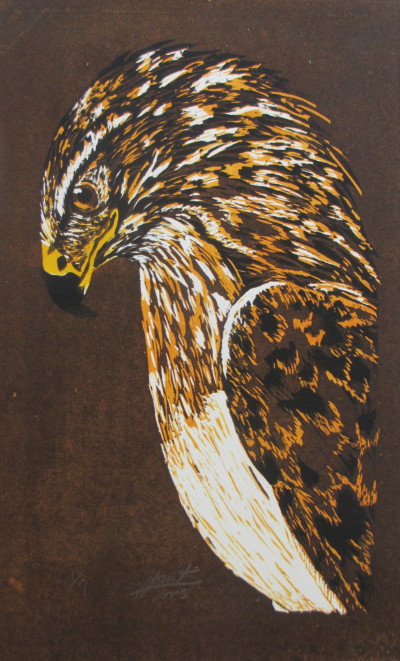
The Prison Arts Project offers art and writing classes at San Quentin several times a day, seven days a week, including linocut, poetry, painting, drawing, mural making, bookbinding, and a partnership with Marin Shakespeare Company. For this year’s iteration of BAN, YBCA’s curatorial team issued a call for proposals for Bay Area arts organizations and the WJA was one of fifty applicants and only fifteen selected participants.
San Quentin, home to nearly 4,000 prisoners and California’s death row for male inmates, may seem like an unlikely artistic hub. But the prison is home to several dozen vocational, educational, and personal programs, such as the associate’s degree–granting Prison University Project, a meditation group, a charitable bike refurbishing group, and a partnership with the Marin Humane Society in which inmates learn to train dogs with health or behaviour issues. Carol Newborg, program manager for the Prison Arts Project, attributes this atypical level of programming to the legacy of Clinton Duffy, San Quentin’s warden from 1940 to 1952. Duffy, a lifelong opponent of capital punishment and proponent of rehabilitation, introduced night school and a series of other programs, even allowing inmates to publish a newspaper and operate a radio station. Duffy was mocked at the time, but there’s no doubt now that programs like the Prison Arts Project have a remarkable impact on prison life.
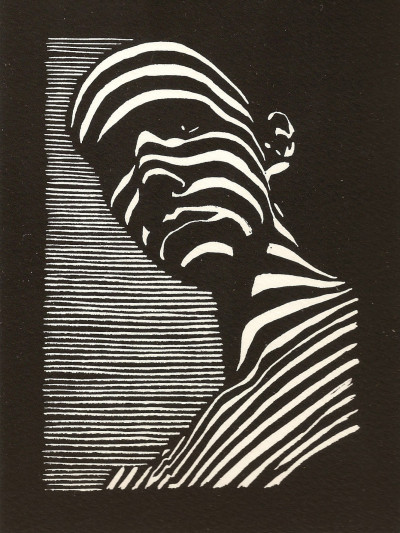
A recent study of prison arts programs found that a significant majority of participants reported a reduction in disciplinary citations, improved confidence, less stress, and increased happiness. Frank, who beams when he speaks of his block printing and bookbinding classes, confirms this study: “It didn’t really feel like prison when I was in there. It was just an amazing place.”
The effects of these programs are not limited to behavior and attitude while incarcerated. A major long-term study from the 1980s, before prison arts programs were cut from California state funding, found that participants had a 27% lower recidivism rate than the general prison population.
While quantifiable measurements like recidivism and improved behavior are often cited as the benefits of prison art programs, former inmates like Frank often mention that which non-prisoners take for granted. “They brought in humanity,” he says of WJA staff and their practice of calling him by his name. “I wasn’t seen as less than human, or a number.” Frank also praises the absence of racial segregation in the art classroom. “It wasn’t just Indians in there. It broke down a lot of barriers. It helped me socialize.”
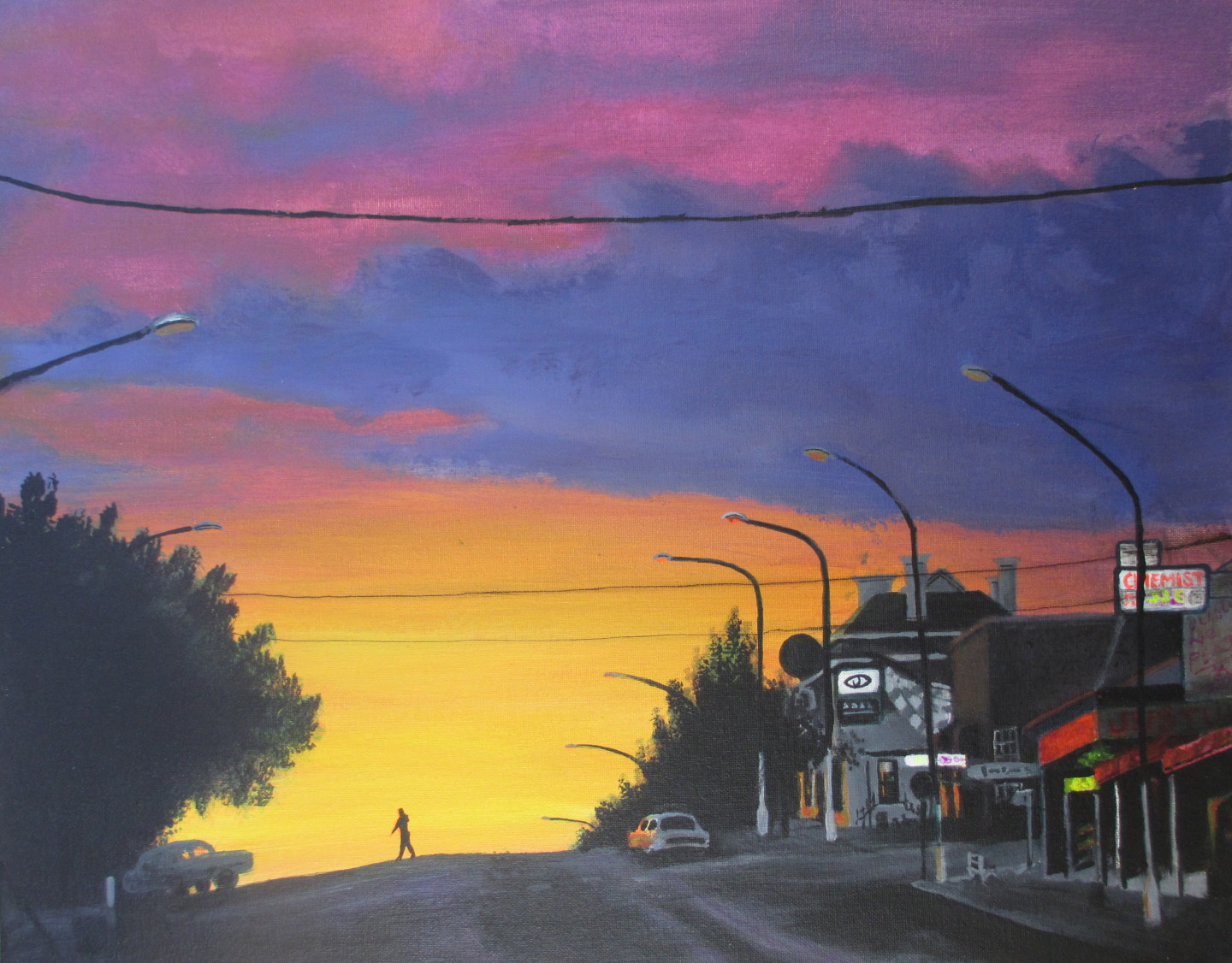
Guillermo Willie, a veteran of prison arts programs who began taking classes midway through his thirty-eight-year sentence, cites the lack of segregation and the atmosphere of acceptance as a major asset of his former art classes. As a teenager, Willie showed a teacher a drawing he made of a muscle man. The teacher asked what was wrong with him for drawing a naked man; his friends also laughed when they saw the drawing. Willie had been drawing since he was a kid but immediately stopped and instead found acceptance in gangs. However, decades later, after a life behind bars, he found acceptance for his art. “Prejudice took a back seat when I showed people my art,” he says of his prison art classes.
Part of the Prison Art Project’s success is WJA’s insistence on working with professional artists and educators. The respect that is built into the program relies on treating prisoners’ art interests as meaningful as any artist or aspiring artist outside San Quentin’s heavily-fortified walls. Frank extols Katya McCullough, his former printmaking teacher who has taught at San Quentin for ten years, and Beth Thielen, his bookbinding teacher who he calls a “brilliant mind” and who recently completed a Rauschenberg Residency and has exhibited at the Corcoran Gallery of Art, the Hammer Museum, and the New Museum. Art Hazelwood, another printmaking teacher, currently teaches at the San Francisco Art Institute and illustrator and painter Pat Maloney has been teaching at San Quentin for over a quarter century.
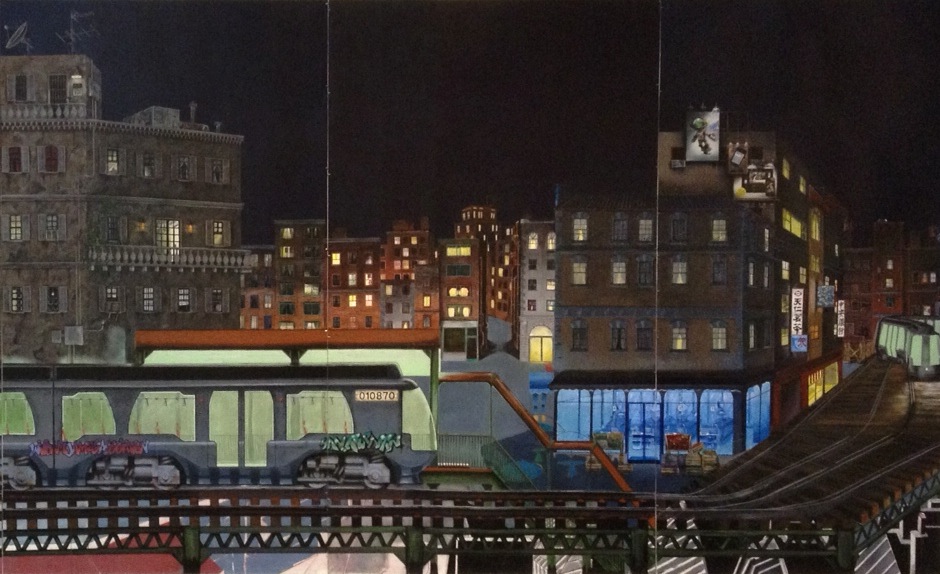
Maloney’s impact at San Quentin has been sizable. The largest work from the Prison Art Project in BAN7 is a sixty-four-foot mural spearheaded by San Quentin artist Scott McKinstry under Maloney’s supervision. The work-in-progress is five years in the making and Newborg expects another five before it is completed. McKinstry, inspired by Los Angeles–based printmaker Hiro Yamagata’s fanciful cityscapes, decided to created a fantasy city of his own. What began as a sixty-foot drawing is now being turned into a mural to be housed in a San Quentin dining hall.
Part of a long history of murals at San Quentin, Newborg calls the mural of McKinstry and his crew “soothing” and “healing,” perfect for a place like San Quentin. But due to strict media controls, no one outside the prison had seen the enormous mural before its display at YBCA. Once the exhibition closes in October, and the mural is crated and sent back to its secured home, the work will again be for the exclusive viewing pleasure of dining inmates, prison guards, and teaching artists. BAN7 offers a truly rare glimpse into this concealed chapter of art history.
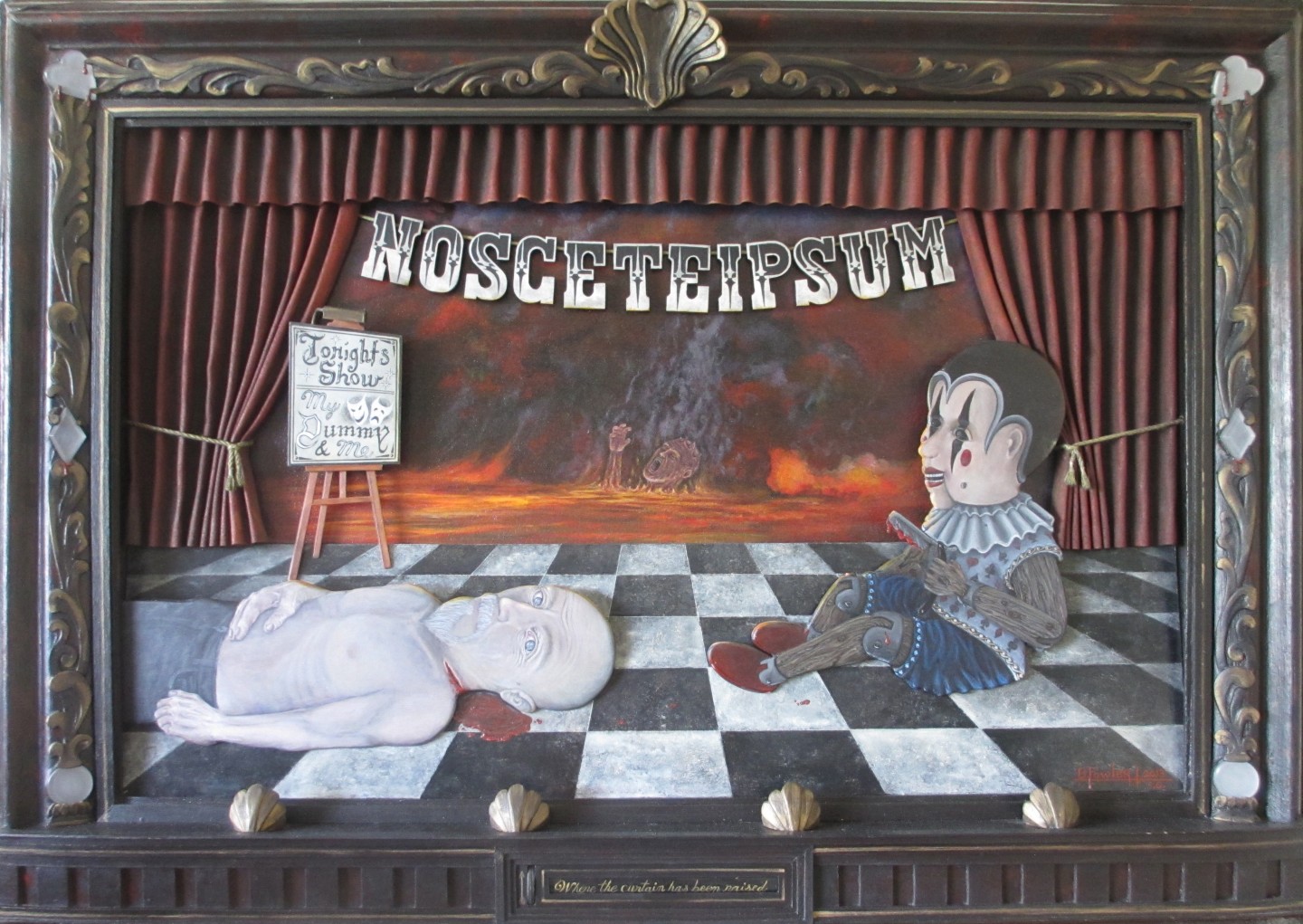
For teaching artist Amy M. Ho, the Prison Arts Project’s inclusion in BAN7 has added significance. Ho, who has been teaching diorama and mandala drawing classes at San Quentin for two years, is also participating in BAN7 on behalf of Stairwell’s, another exhibiting organization. Ho explains that while some prisoners appreciate the exotification of their work, as it brings attention to it, others lament that they can’t just be known as artists in their own right. But at BAN7, even though the prison narrative is present, Ho’s own diorama work will exhibit alongside a diorama created by Bruce Fowler, one of her students from San Quentin. What they have in common is not the prison, but that they are both artists.
Bay Area Now 7 runs through October 5, 2014 at the Yerba Buena Center for the Arts. For more information visit ybca.org.